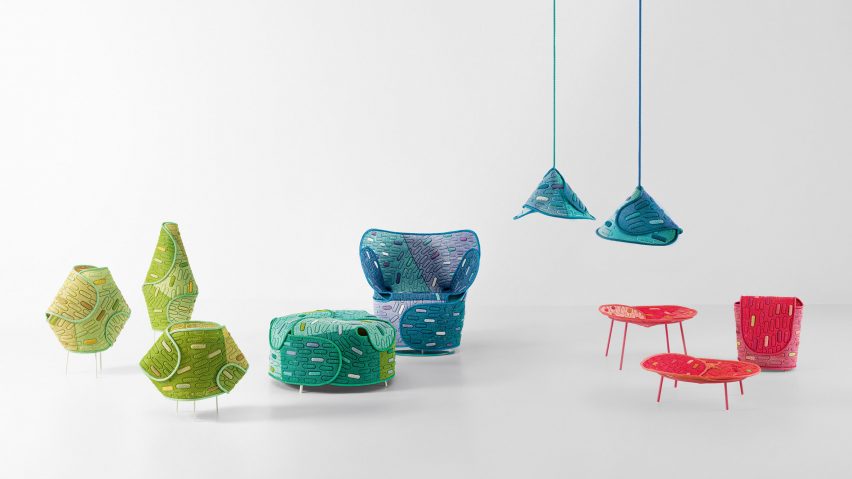
Oki Sato "used twenty years' worth of colours" in Hana-arashi collection
Nendo founder Oki Sato broke two frying pans when creating the heated-up material for his colourful Hana-arashi furniture collection for Paola Lenti, which was shown as part of Milan design week.
The designer, whose studio Nendo is known for its innovative but often pared-back and monochrome designs, created an unusually colourful collection for his collaboration with Italian design brand Paola Lenti.
Called Hana-arashi, it was made from leftover material and offcuts from Paola Lenti's outdoor furniture as part of the brand's Mottanai series of projects that aim to reuse waste.
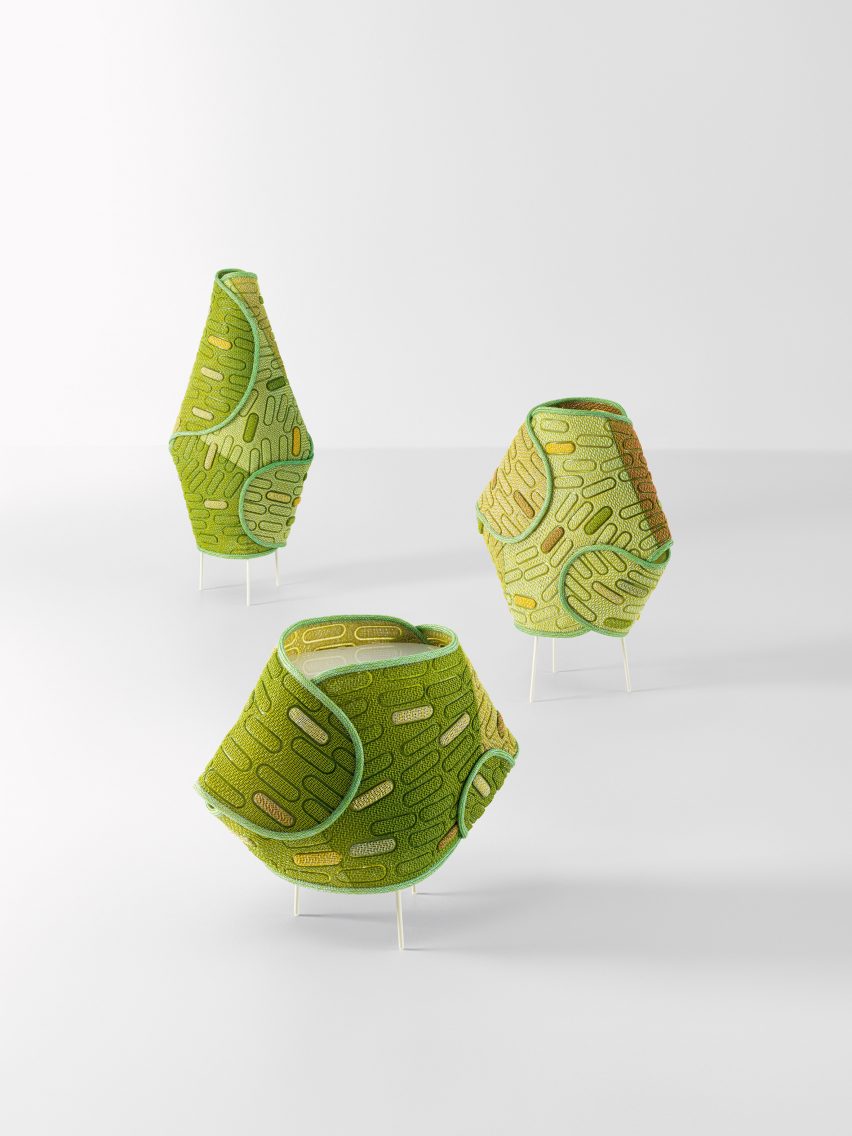
Sato, who normally gets more specific briefs, told Dezeen at the opening of an exhibition showcasing the collection that this was a different way of working for him.
"When I work with a furniture company I usually get briefed to create an object – they want a table, or for me to solve something," Sato said.
Instead, the brand's founder Paola Lenti invited Sato to her office and showed the offcuts of the fabric material used for its outdoor furniture.
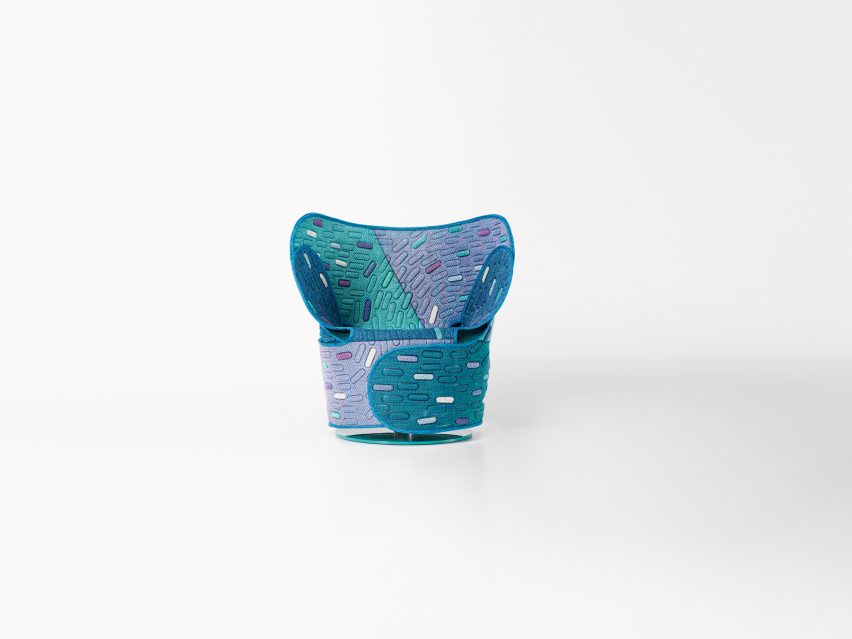
The colourful material turns into plastic once it is melted down.
"She showed me a piece of plastic and said, we melt the fabric and it becomes this material because it is made of 100 per cent polypropylene, which is a recyclable material," Sato said.
The contrast between the fabric in its original softer form and its melted, hardened shape appealed to Sato.
"It was interesting because the fabric was very soft and tactile; it had a very nice feel," he said.
"On the other hand, the plastic was very solid, very rigid, so I wondered if we could find something in-between, something semi-solid."
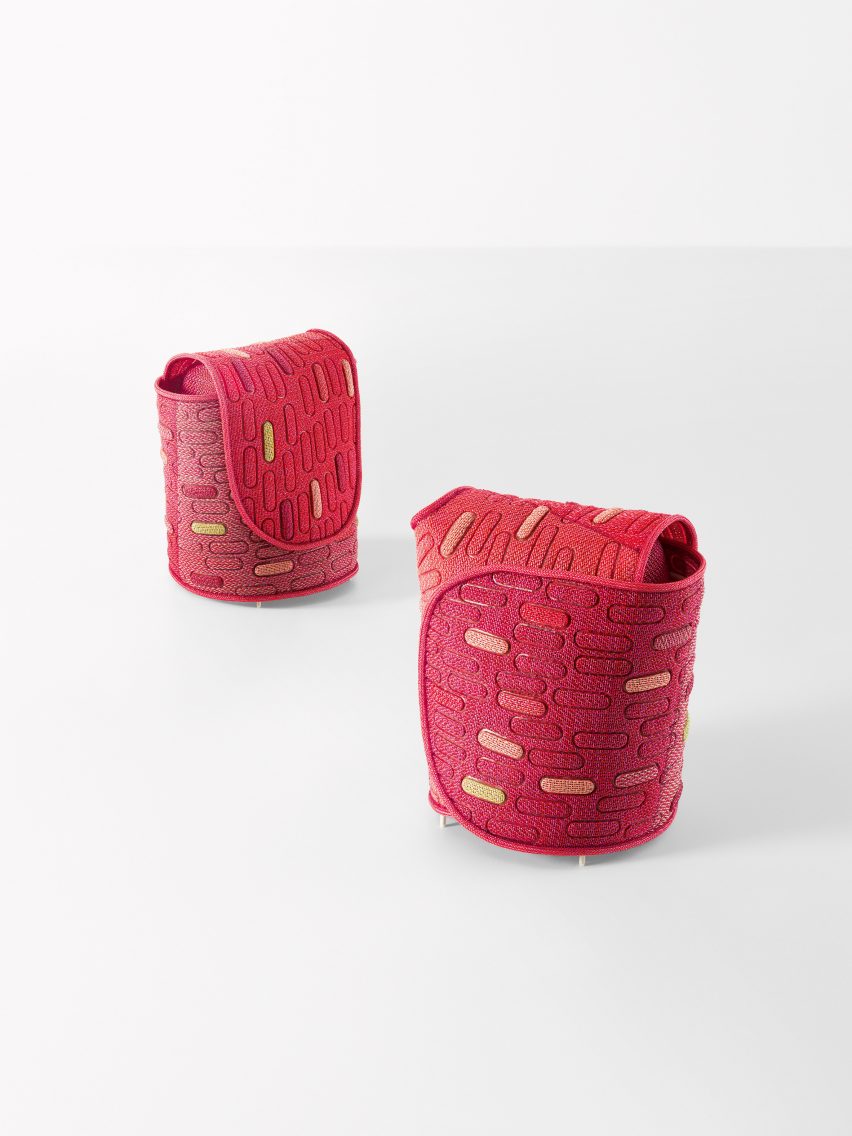
To create the new material, Sato began experimenting with the fabric scraps, which led to some office mishaps.
"I received a lot of the fabric offcuts and went back to the Tokyo studio and put it in the microwave oven, I boiled it and fried it," he said. "It melted and destroyed two of our fry pans – it was like cheese almost."
Eventually, the experiments led Sato to discover a way to transform the fabric into a material with the right texture and consistency for his pieces.
"We sandwiched the material in wax paper and then ironed it, and by controlling the pressure and heat, we noticed that it became a semi-solid fabric," he added. "That was the 'aha'-moment."
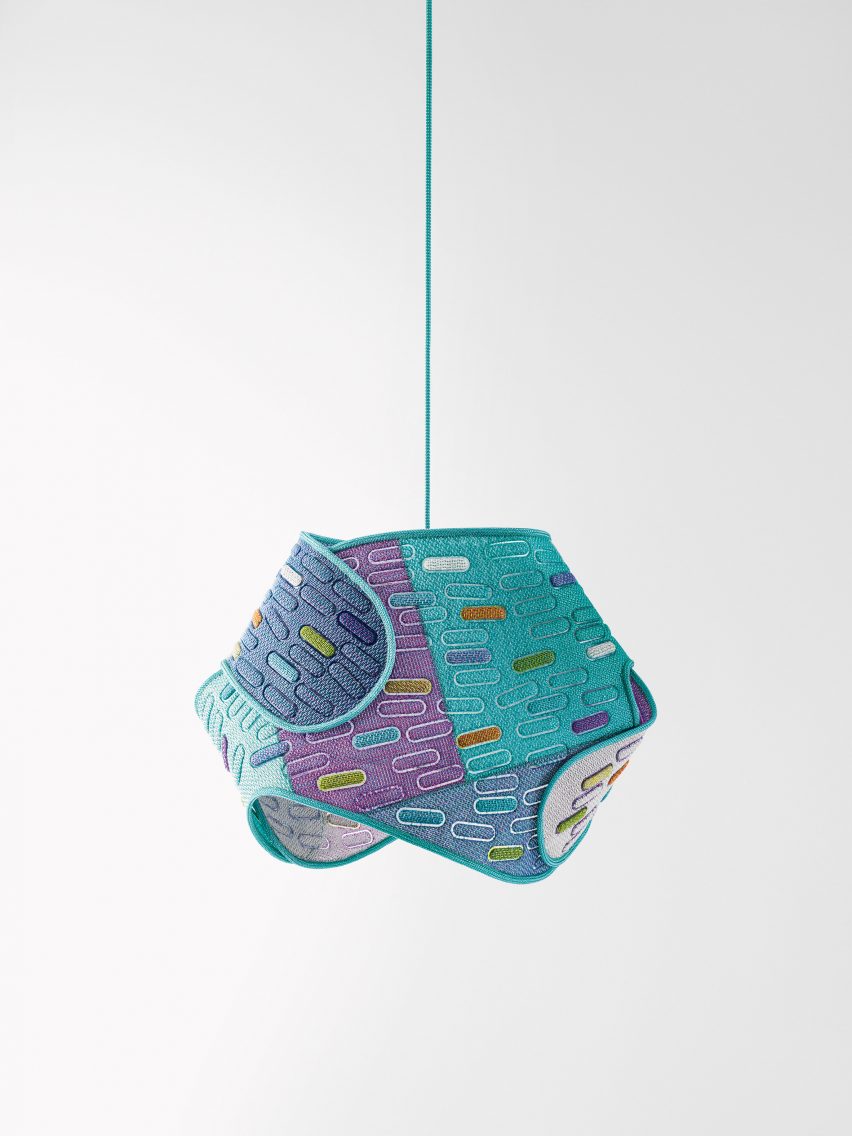
The process meant that Nendo could connect smaller offcuts into bigger pieces without using glue or stitching, creating a mono-material that the studio used for the collection, which comprises furniture and accessories.
Unusually for Nendo, every piece in the collection is very colourful, leading Sato to joke that it gave him an outlet after two decades of monochrome design.
"I was telling Paola that maybe I've used 20 years' worth of colours in one collection," he said.
"Before, I felt that colour was more like fashion trends; it's used for marketing reasons like 'this year's colour,' and I try to stay away from that because it's not really linked with my way of designing things."
"But It felt very natural to play with colours with Paula; it was fun discussing which colour works with which colour and it was really refreshing – I studied a lot, it was a learning experience for myself," he added.
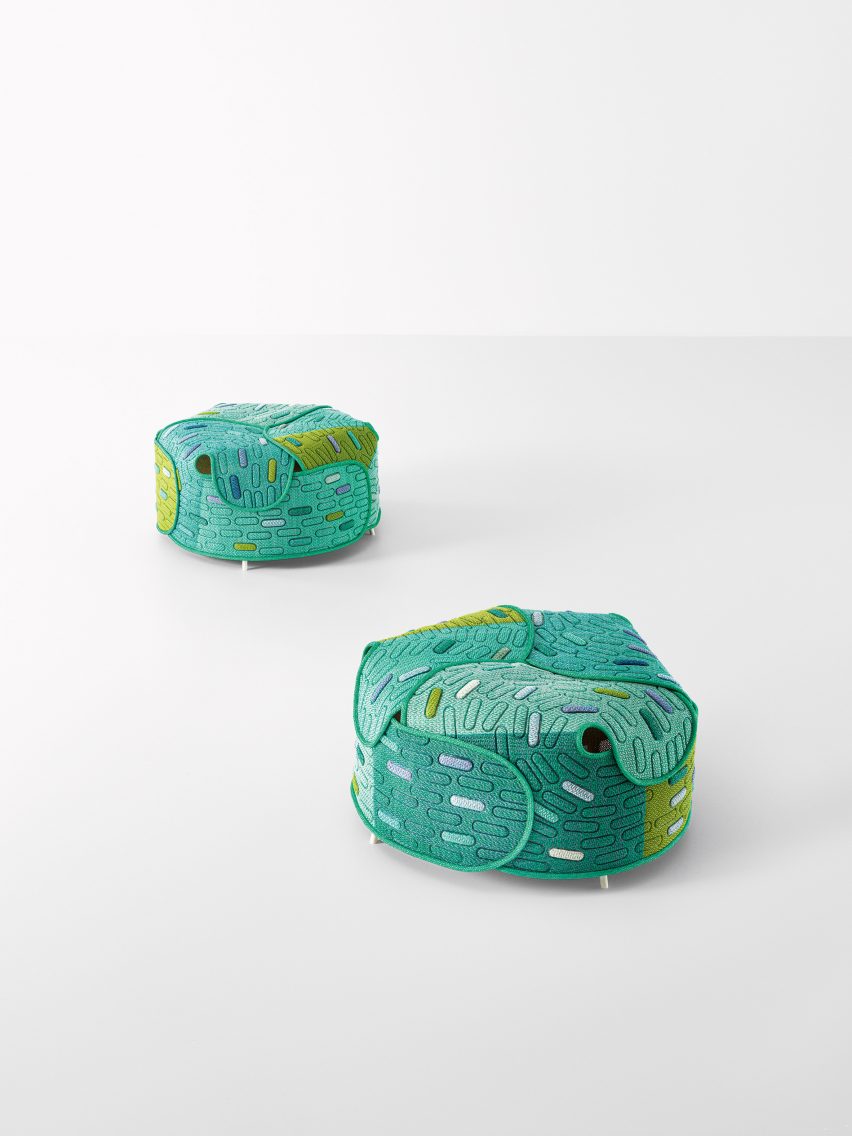
The natural influences gave the collection, Hana-arashi, its name, which means flower storm.
"The image that I had was of the falling leaves in autumn when you have different colours like yellows, and oranges and reds, and then they all fall on the floor, and it creates this beautiful pattern that is very natural," Sato explained.
"Then it developed into the image of the Hana-arashi, which means flower storm. When we say flower in Japan, it's always about the sakura flowers, the cherry blossoms in spring," he continued.
"In Japan, of course, everyone likes the full bloom. But after it, the petals start to fall from the trees, and then they fly, they start dancing in the wind – we call that the second bloom and we enjoy that as well."
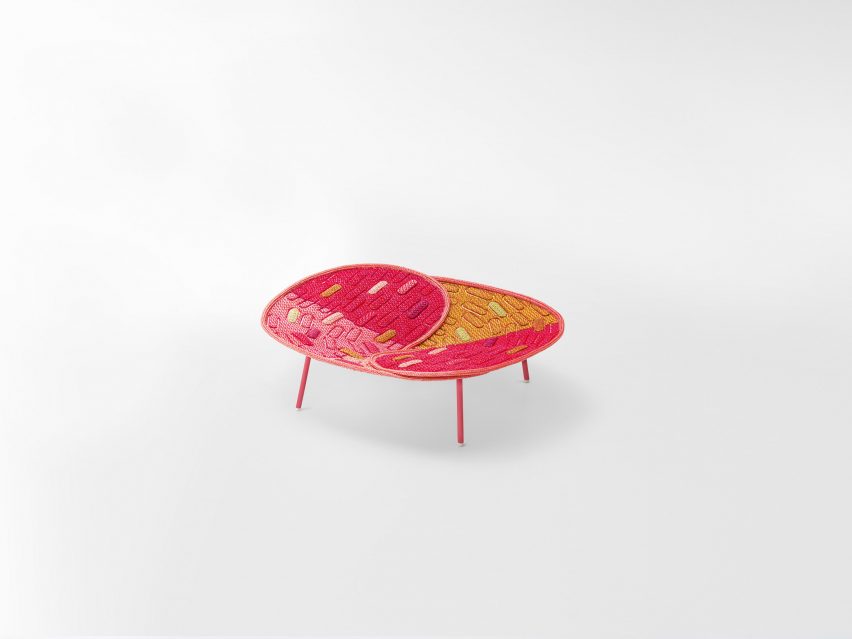
The different stages of the sakura flowering season reminded Sato of the process of creating this collection.
"I thought that story really links with this Mottanai project, which is about first having the products – which is the full bloom – and then the offcuts, the materials that are not used in the first phase, would be given a second life," he explained.
The Hana-arashi collection was showcased at Paola Lenti's newly opened showroom during design week, where visitors entered the room through a curtain made from the leftover fabrics, cut to resemble leaves in the wind.
A number of architects showed furniture projects at this year's Milan design week, which also featured plenty of must-see installations.
The photography is courtesy of Paola Lenti.
Milan design week took place from 15 to 21 April 2024. See Dezeen Events Guide for an up-to-date list of architecture and design events taking place around the world.